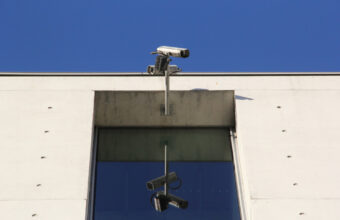While the traditional approach to window tinting involves applying the film to the interior side of windows, there are scenarios where tint is applied to the exterior. This method might seem counterintuitive at first, given concerns about exposure to elements, but it offers distinct advantages in certain contexts.
Let’s delve into the reasons behind exterior window tint application and its benefits…
Ease of Installation and Accessibility
- Accessibility – In some cases, the interior side of a window may be difficult to access due to permanent fixtures, furniture, or architectural constraints. Exterior application becomes a practical solution, enabling a straightforward installation process without the need to move or alter interior setups.
Enhanced Solar Control and Efficiency
- Immediate Reflection of Solar Rays – By applying tint on the exterior, solar rays are reflected or absorbed before they even reach the glass. This can be more efficient in reducing solar heat gain, making the space cooler and more comfortable while lowering energy costs associated with cooling.
Specific Use Cases
- High-Rise Buildings and Commercial Spaces – For skyscrapers and commercial buildings, exterior tinting can be more feasible and cost-effective, especially when interior access is challenging. It’s also used for aesthetic reasons, providing a uniform appearance from the outside.
- Temporary Solutions: Exterior films can be used as temporary solutions for events or specific seasons, offering flexibility when permanent tinting is not desired.
Protective Layer
- Additional Protection – Applying tint to the exterior adds a layer of protection to the window itself, potentially shielding it from minor scratches and wear. This can be particularly advantageous for windows in high-traffic areas or those susceptible to accidental damage.
Technology and Durability Improvements
- Advancements in Film Technology – Modern exterior window films are designed to withstand weather conditions, UV exposure, and wear and tear. These films are often equipped with additional protective layers that enhance their durability and lifespan, mitigating concerns about rapid degradation.
Considerations and Drawbacks
- Durability Concerns – Despite advancements, exterior window tints may have a shorter lifespan compared to interior tints due to direct exposure to the elements. Regular maintenance and occasional replacement might be necessary.
- Potential for Vandalism – Exterior films are more accessible and, therefore, more susceptible to vandalism, which could be a consideration in certain areas.
Applying window tint on the exterior of windows can offer practical installation advantages, enhanced solar control, and specific benefits for commercial buildings and temporary needs. With improvements in film technology, exterior tints have become more durable and effective, making them a viable option in certain situations. It’s vital to weigh the benefits against potential durability concerns and the specifics of the installation environment. Consulting with a professional can help determine the best tinting solution for your needs, ensuring optimal performance and longevity.






